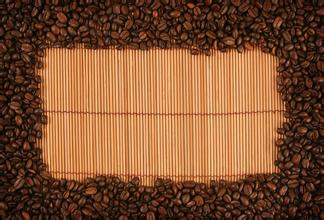Flavor description of Arabica coffee beans in Latin America introduction to the regional treatment of manor production
Flavor description of Arabica coffee beans in Latin America introduction to the regional treatment of manor production
Planting coffee trees is only the first step in producing coffee. When the coffee fruits are ripe, they can be harvested through picking equipment. Two seeds (Arabica coffee beans) are then extracted from each berry. The last step is to roast coffee beans for consumption. This removes moisture and changes the structure and color of coffee beans to produce the taste that consumers need. Coffee beans produced in each region have different tastes and flavors, so choices need to be made based on consumers' personal preferences to grow in the subtropics. Arabica coffee trees are usually planted at an altitude of 550m to 1010 m, where there are clear rainy and dry seasons. In this way, there can be a growing season and a harvest season every year. If it is in the equatorial region, it is best to plant this plant at an altitude of 1010-1920 meters, where there is frequent rainfall. This will lead to continuous flowering and allow two harvest seasons. Arabica coffee trees are planted at higher altitudes to produce a product called alpine coffee. Arabica coffee trees are native to the southwestern Arabian Peninsula and have been growing for thousands of years. However, many varieties of this coffee bean can also be found in Latin America and Asia, as well as in subtropical and equatorial regions such as Africa. About 80 per cent of the world's coffee products are made from Arabica beans, with less than 20 per cent of the remaining market for Robusta beans. Robusta coffee trees are more hardy, while Arabica can only grow in special climates.
Robusta is easier to grow, more resistant to disease, can grow at lower elevations and is more adaptable to weather conditions than Arabica. Robusta produces far more than Arabica and has a shorter ripening cycle.
Robusta generally grows in the Eastern Hemisphere, mainly in Africa, Indonesia and Vietnam. Arabica is also grown in Africa and Papua New Guinea, but today it is mainly grown in Latin America. Among the major coffee producing countries in the world, Colombia only grows Arabica coffee. The vast majority of coffee grown in Vietnam is Robusta. Both Brazil and India are grown.
The price of Arabica is higher. Most instant coffee is robusta, and cheap coffee is robusta. Although we can buy Arabica coffee at a higher price, Arabica coffee is not necessarily of high quality.
Generally speaking, Robusta has a smaller particle size than Arabica and is not as rich in taste and aroma as Arabica. But what kind of coffee you choose depends on your personal taste, and everyone has a different definition of good coffee.

Important Notice :
前街咖啡 FrontStreet Coffee has moved to new addredd:
FrontStreet Coffee Address: 315,Donghua East Road,GuangZhou
Tel:020 38364473
- Prev

What does Kenya Coffee Bean Grade ABtop mean? introduction to the characteristics of graded brands
What does the Kenyan coffee bean grade ABtop mean? graded brand characteristics introduce different small producing areas mean different flavor characteristics. For example, the famous Ethiopia-Haramoka (EthiopiaHarrar) is produced in southern Ethiopia near Somalia. Haramoka has wine-like aromas, blueberry or grape flavors, thick palate, fresh and bright Yega Snow, with citrus.
- Next

Flavor description of Jamaican Blue Mountain Coffee Bean introduction to the varieties produced in the manor area
Flavor description of Jamaican Blue Mountain Coffee beans Variety introduction of the Manor Regional treatment Variety introduction as early as 1728, Sir Nicholas Strauss, the Governor of the United Kingdom in Jamaica, brought the first coffee seedlings to Jamaica from Martinique. By 1790, some coffee farmers among the refugees in exile from Haiti had settled in the Blue Mountains.
Related
- Detailed explanation of Jadeite planting Land in Panamanian Jadeite Manor introduction to the grading system of Jadeite competitive bidding, Red bid, Green bid and Rose Summer
- Story of Coffee planting in Brenka region of Costa Rica Stonehenge Manor anaerobic heavy honey treatment of flavor mouth
- What's on the barrel of Blue Mountain Coffee beans?
- Can American coffee also pull flowers? How to use hot American style to pull out a good-looking pattern?
- Can you make a cold extract with coffee beans? What is the right proportion for cold-extracted coffee formula?
- Indonesian PWN Gold Mandrine Coffee Origin Features Flavor How to Chong? Mandolin coffee is American.
- A brief introduction to the flavor characteristics of Brazilian yellow bourbon coffee beans
- What is the effect of different water quality on the flavor of cold-extracted coffee? What kind of water is best for brewing coffee?
- Why do you think of Rose Summer whenever you mention Panamanian coffee?
- Introduction to the characteristics of authentic blue mountain coffee bean producing areas? What is the CIB Coffee Authority in Jamaica?

